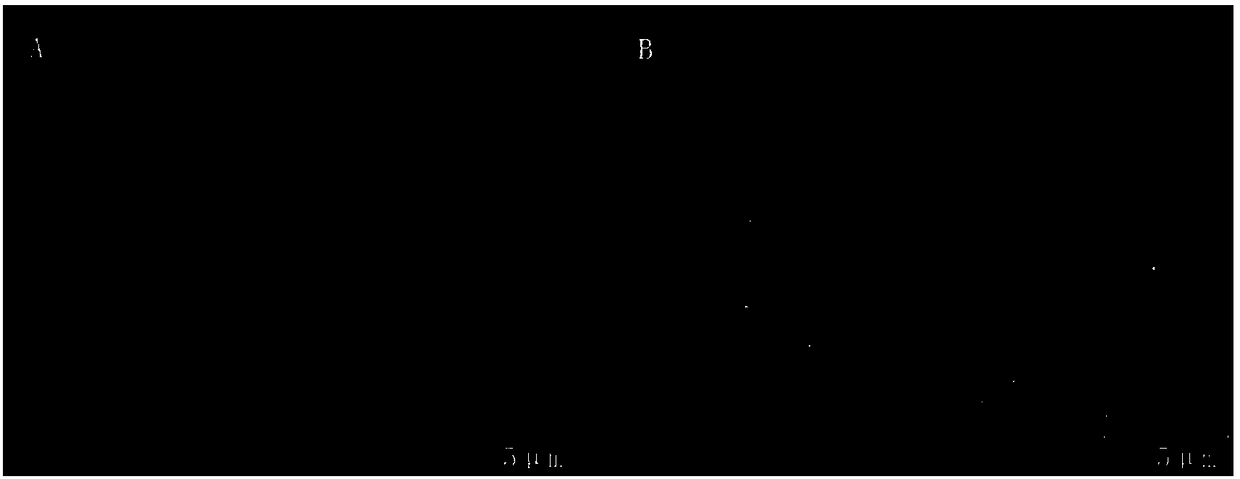MFC (microbial fuel cell) decolorization method based on PEDOT membrane electrode
A dioxythiophene membrane and fuel cell technology, applied in biochemical fuel cells, battery electrodes, chemical instruments and methods, etc., to achieve the effects of improving electricity production and decolorization capabilities, improving adsorption capabilities and extracellular electron transfer capabilities, and low cost
- Summary
- Abstract
- Description
- Claims
- Application Information
AI Technical Summary
Problems solved by technology
Method used
Image
Examples
Embodiment 1
[0031] Example 1: A PEDOT film was polymerized on the surface of a graphite plate as an MFC anode for the decolorization of the highly polar azo dye Ponceau (XP2R, 3761-53-3).
[0032] In this embodiment, two types of MFC fuel cells are used: one is that the anode of the MFC is a graphite plate, and the other is that the anode of the MFC electropolymerizes a layer of PEDOT (that is, a PEDOT membrane electrode) on a graphite plate substrate. The only difference between the two MFCs is that one is a pure graphite electrode, the other is a PEDOT membrane electrode, and the other conditions of the MFC are the same. The MFC with pure graphite block as the anode represents the MFC reported in the existing literature; the MFC with the PEDOT membrane electrode as the anode represents the MFC decolorization method of the present invention.
[0033] The decolorization ability and power generation ability of MFC are not only related to the electrode material, but also related to the size...
Embodiment 2
[0044] Example 2: MFC of PEDOT modified carbon felt is used for decolorization of azo dyes, triphenylmethane dyes and anthraquinone dyes.
[0045] The anode and cathode conditions for the control MFC were: carbon felt with dimensions 20mm x 10mm x 5mm. The MFC anode and cathode conditions of the present invention are as follows: carbon felt with a size of 20mm×10mm×5mm is used as the electrode base material, and PEDOT is modified on the carbon felt by electrochemical method. The decolorizing electrogenic bacteria adopts the marine electrogenic bacteria Morganella sp. DS4020 mentioned in the first application for Chinese patent (CN105238716A). The other structures and operating conditions of the two MFCs are exactly the same. Select 5 dyes, namely monoazo dye ponceau 2R, disazo dye acid scarlet GR (AR73,5413-75-2), Congo red (CR,573-58-0), triphenylmethane peacock Green (MG, 569-64-2) and anthraquinone dye reactive brilliant blue KN-R (RB19, 2580-78-1) were used as test dyes. ...
PUM
| Property | Measurement | Unit |
|---|---|---|
| diameter | aaaaa | aaaaa |
| length | aaaaa | aaaaa |
Abstract
Description
Claims
Application Information
 Login to View More
Login to View More - R&D
- Intellectual Property
- Life Sciences
- Materials
- Tech Scout
- Unparalleled Data Quality
- Higher Quality Content
- 60% Fewer Hallucinations
Browse by: Latest US Patents, China's latest patents, Technical Efficacy Thesaurus, Application Domain, Technology Topic, Popular Technical Reports.
© 2025 PatSnap. All rights reserved.Legal|Privacy policy|Modern Slavery Act Transparency Statement|Sitemap|About US| Contact US: help@patsnap.com



